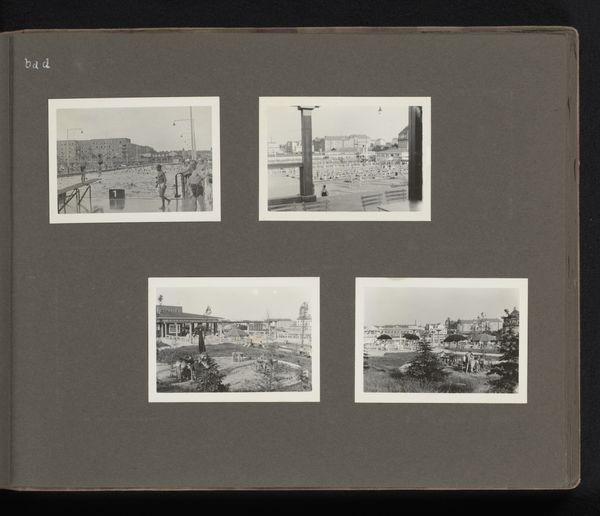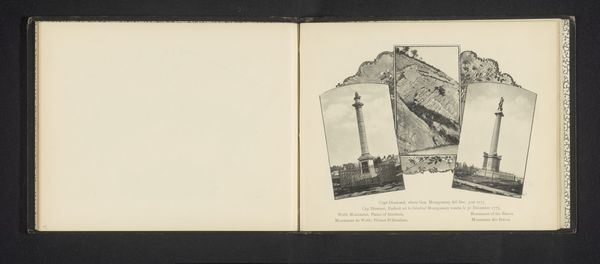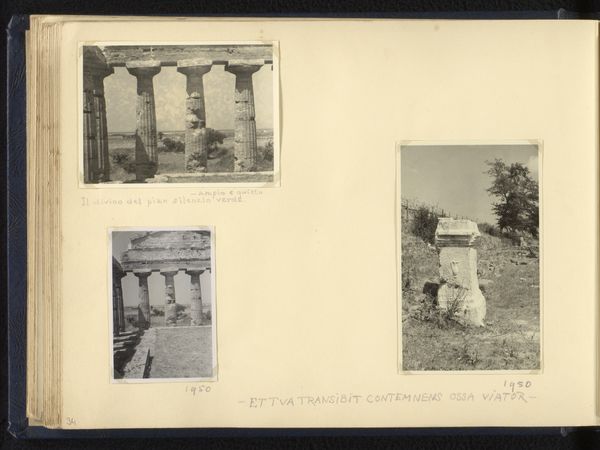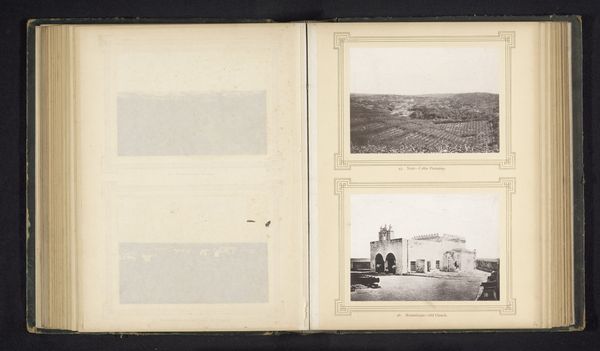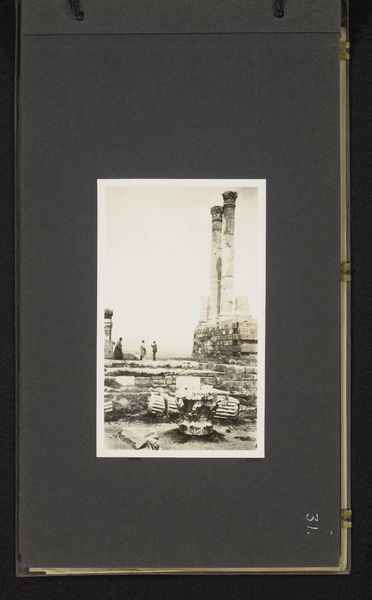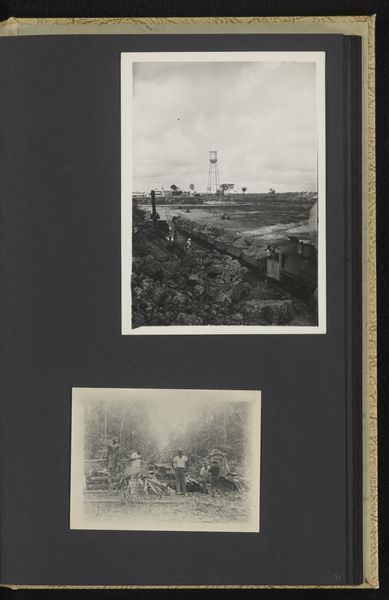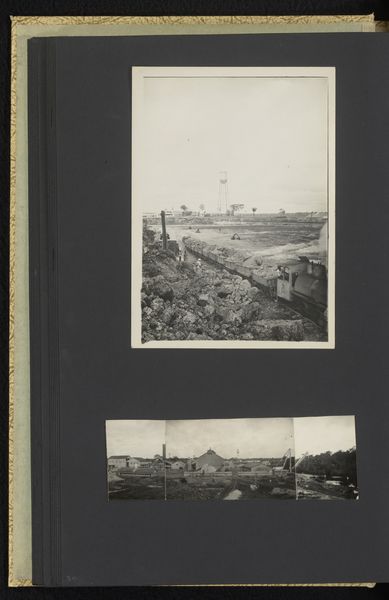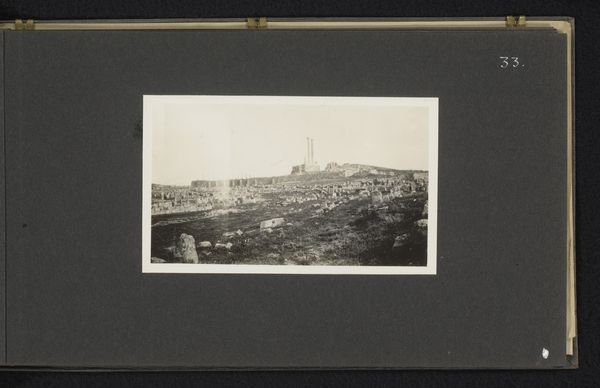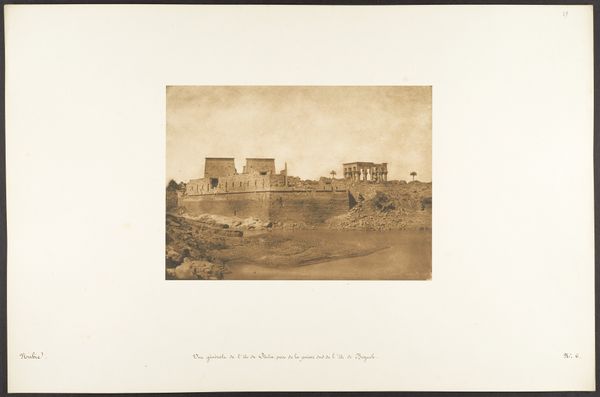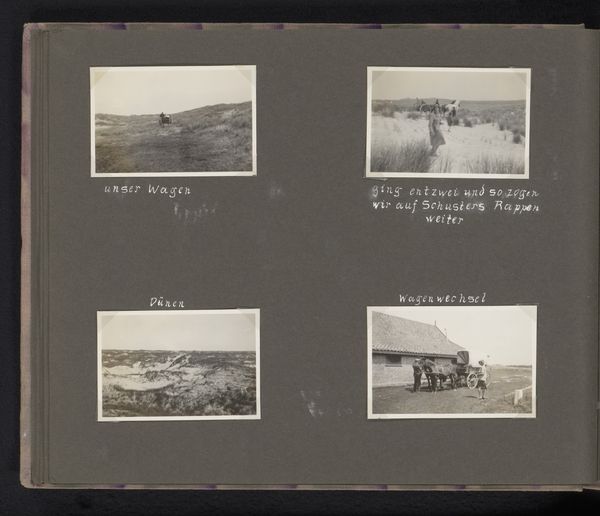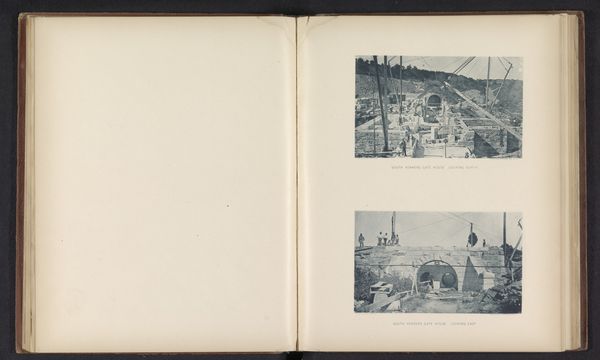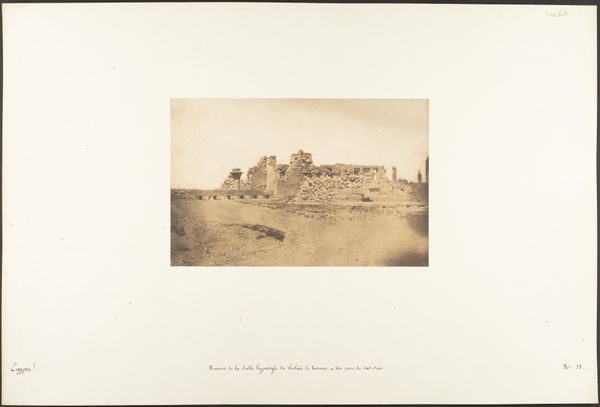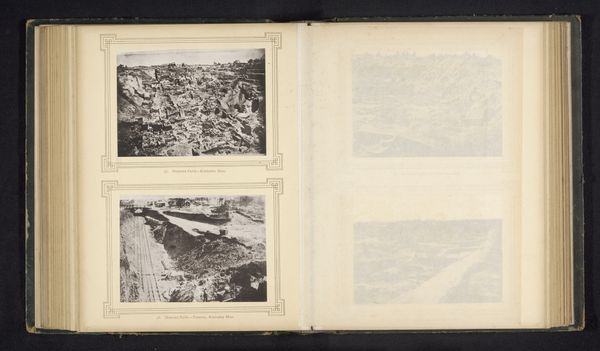
print, photography, site-specific, gelatin-silver-print
# print
#
greek-and-roman-art
#
landscape
#
photography
#
ancient-mediterranean
#
site-specific
#
gelatin-silver-print
#
realism
Dimensions: height 232 mm, width 336 mm
Copyright: Rijks Museum: Open Domain
Curator: This is a fascinating gelatin-silver print by Norbert van den Berg, taken around 1950. It captures two photographs of the temple ruins at Paestum, presented within what appears to be a photo album. What's your initial reaction? Editor: It evokes a sense of melancholic grandeur. The contrast of the stark black and white against the crumbling architecture speaks of time and decay. Even as snapshots, they carry a weighty feeling. Curator: Exactly! These aren’t just travel snaps; there is intentional framing to emphasise ruin. Paestum was, of course, a major Greco-Roman site. It’s been a significant site of archaeological interest since the 18th century, informing our ideas around antiquity. And I see how the presentation of photographs here as historical evidence adds another layer. Editor: I’m struck by the columns in the separate shots; one shows a partial view of columns among overgrown fields, while the other features a lone column against a stark sky. The isolated column becomes a symbol of endurance, the last vestige of a vanished civilization, really hitting on the romantic idea of glorious decay and resilience in time. Curator: Very much, and van den Berg created this in the mid 20th century; a time still grappling with aftermath of conflict. Photographing ruins like this perhaps offers a means to understand societal changes; there is resilience here, survival but, certainly, great loss and shifting meaning, as the temples and other artefacts become something different from their original context and purpose. Editor: Definitely! Also the shift in symbolism resonates – from serving the gods to embodying the passage of time itself. Each stone whispers tales of shifting powers and belief systems. They echo across culture, and almost seem to mourn lost rituals of belief in the old Gods, almost replaced by worship of progress. Curator: Indeed, this work presents classical imagery but its commentary, especially placed within the framework of mid 20th century anxieties, transcends any single narrative or historical context. Editor: It is a layered piece; historical, but simultaneously intensely evocative for all who gaze upon it, with symbols and echoes beyond a specific time.
Comments
No comments
Be the first to comment and join the conversation on the ultimate creative platform.
